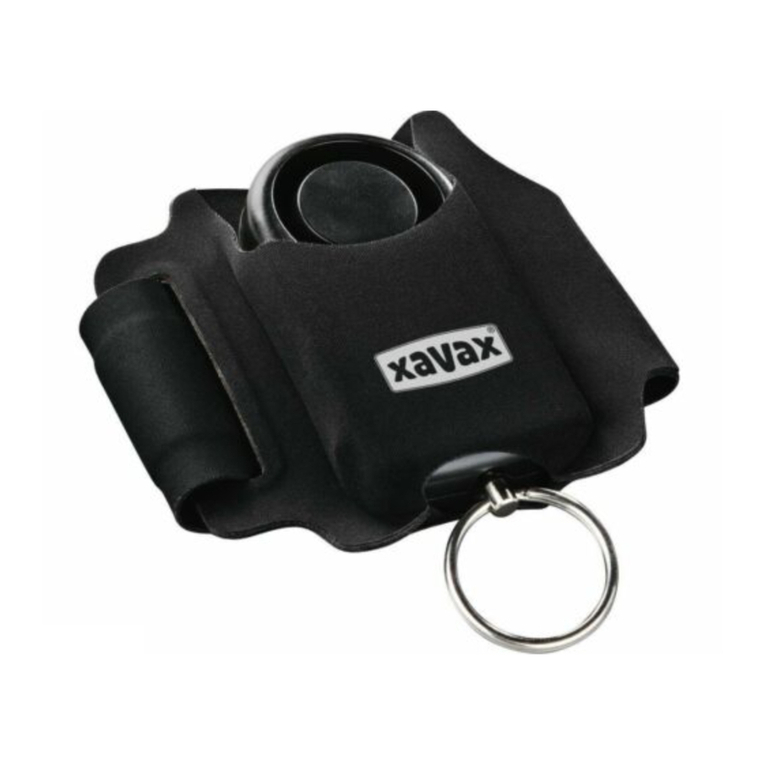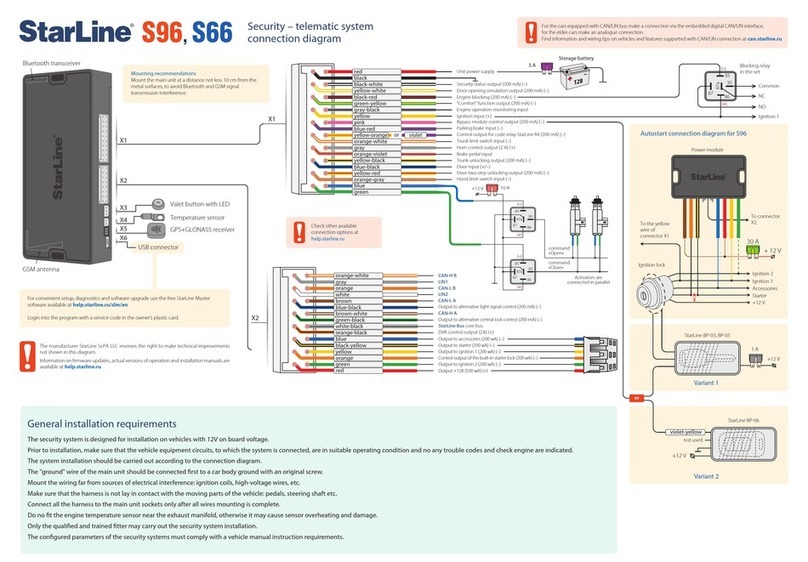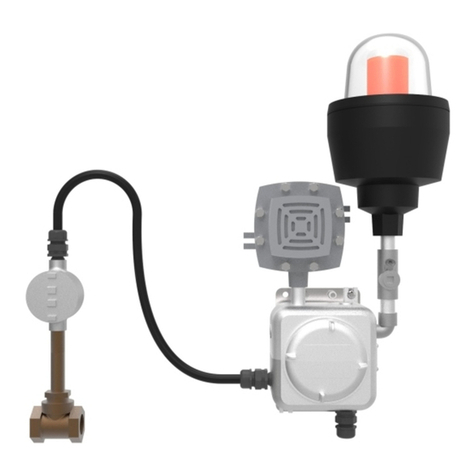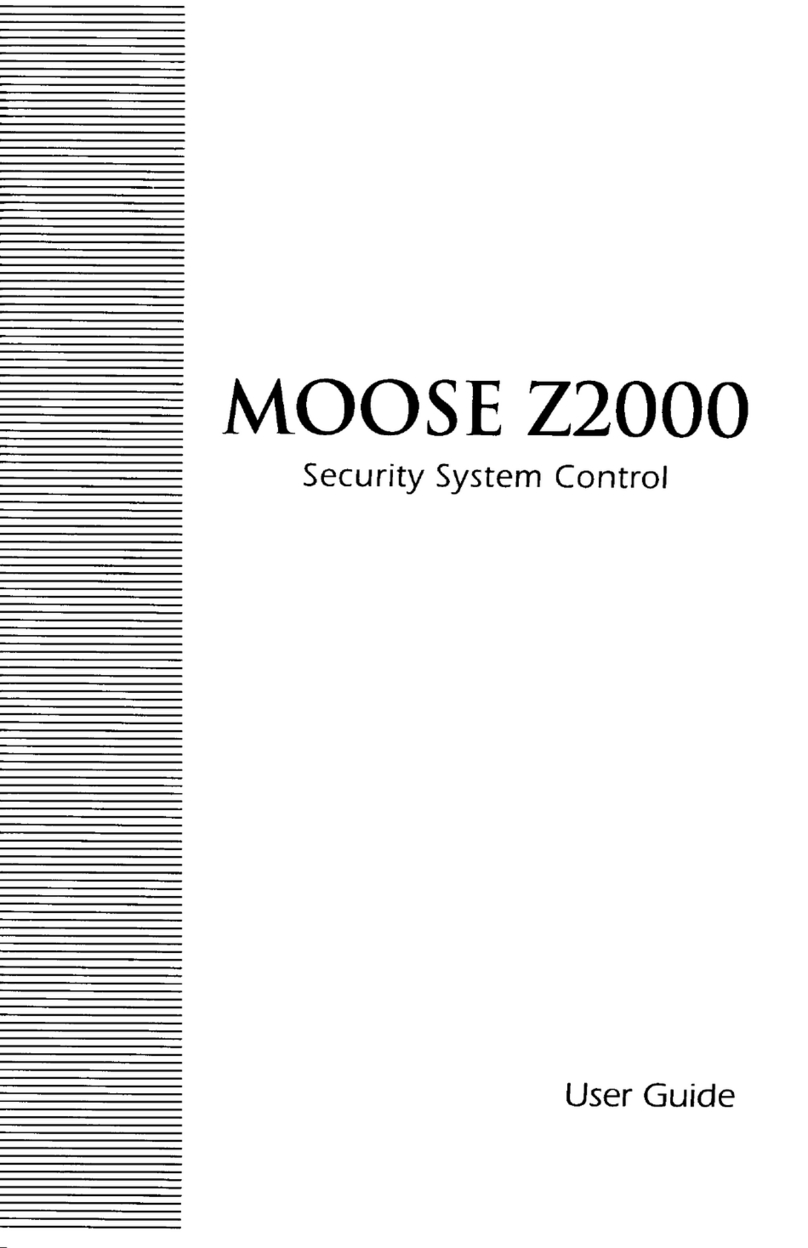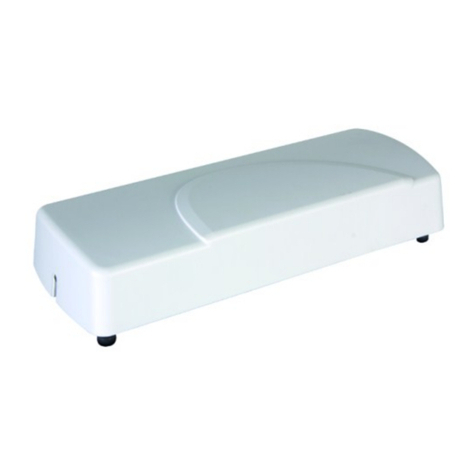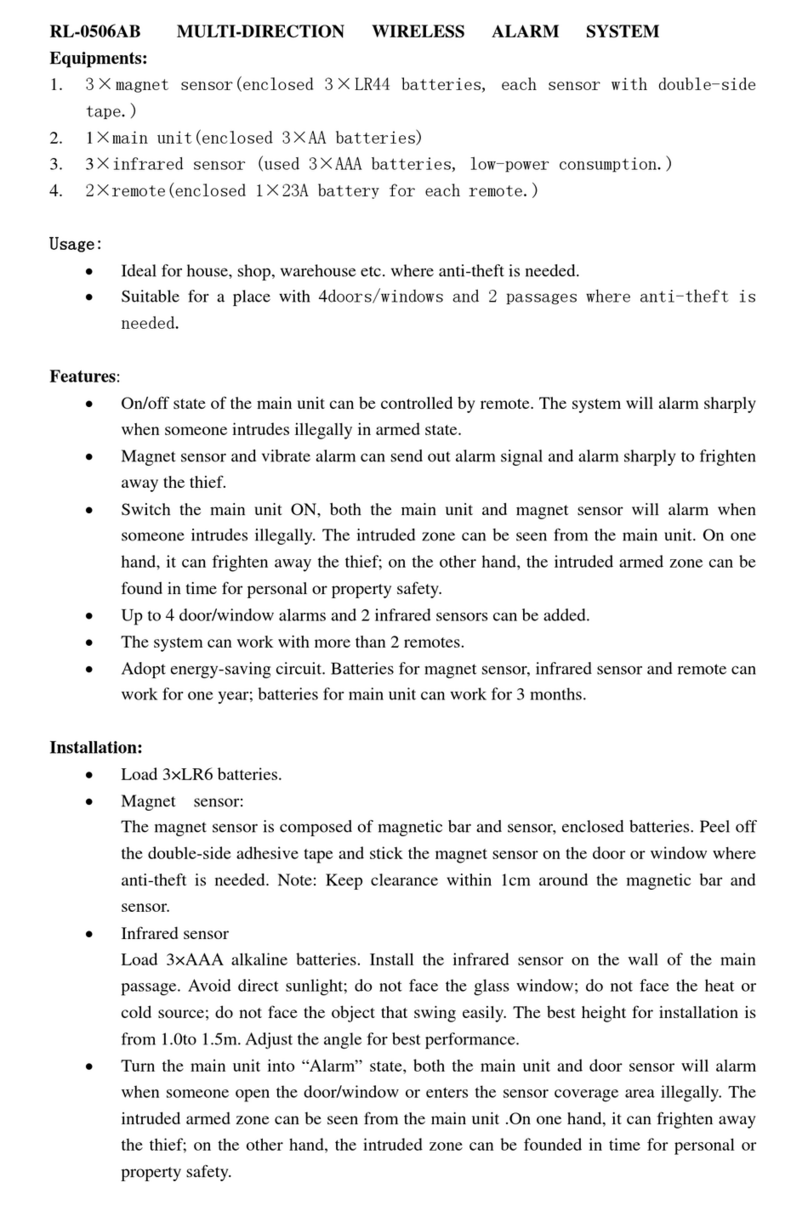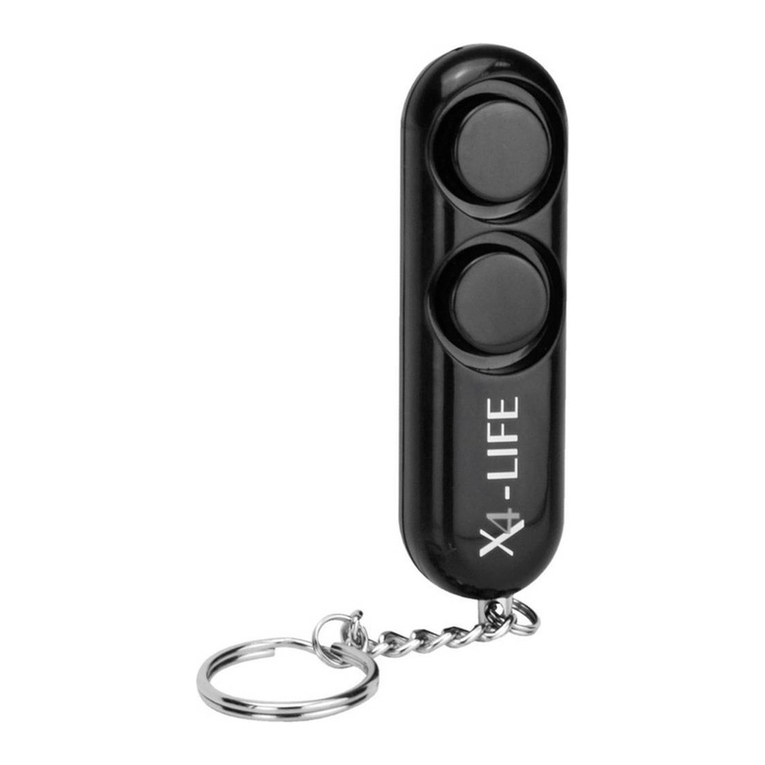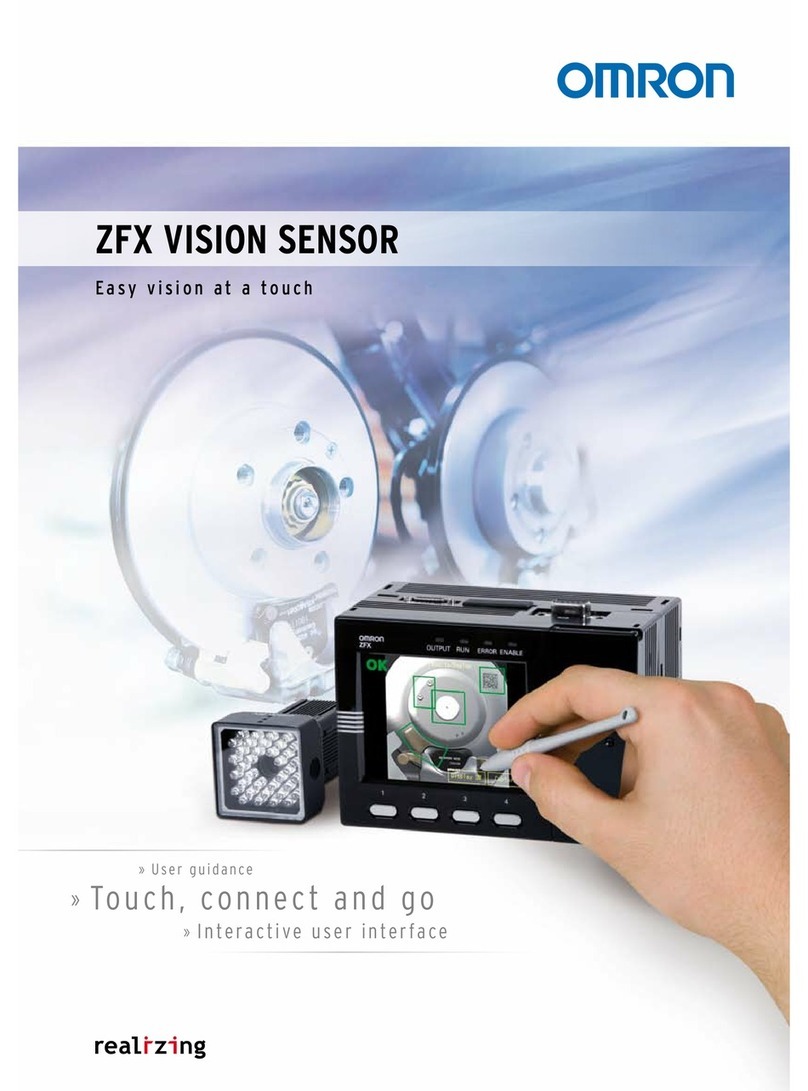GKB VFDS Guide

VFDS™ (Video Fire Detection System)
System Design Manual
V3.1 English
GKB SECURITY CORPORTATION

Index
Chapter 1
Introduction of VFDS™...................................................1
1.1 VFDS™ specifications and functions..............................................................2
1.2 VFDS™ system components...........................................................................2
Chapter 2
VFDS™ system design .....................................................3
2.1 System protection target setup.........................................................................4
2.2 Detection environment investigation...............................................................5
2.3 Hazards analysis and scenario Design Considerations setup...........................7
2.4 Detection time definition ...............................................................................10
2.5 Hazard Detection Definition..........................................................................11
2.6 Fire / smoke detected definition.....................................................................12
2.7 Detection coverage definition........................................................................14
2.8 Camera setup and parameter setup ................................................................22
Appendix 1 Design example.....................................................................1
Appendix 2 VFDS™ Test on UL268........................................................6

1
Chapter 1 Introduction of VFDS
™
VFDS™ (Video Fire Detection System) is an intelligent video system which is able to
recognize fire and smoke through analyzing video signals and send alarm accordingly.
VFDS™ server takes CCTV cameras or other compatible devices video images and
analyzes whether there is smoke or fire, triggering visual or aural alarm. The system
functions as VFDS™ Console structure hereafter. VFDS™ server is capable of processing
8-channel videos at the same time to perform early stage fire and smoke detection. In
comparison with traditional fire detectors, the VFDS™ provides many extra advantages:
1. Early stage alarm
VFDS™ may prevents serious damage and millions of lost by recognizing fire and
smoke at an early stage. VFDS™ detects both flame and smoke, covering different
types of fire formations no matter whether the flame or smoke starts first.
2. Wide coverage
The detection coverage equals to the visual footprint of the selected camera.
3. Cost efficient
One VFDS can take place of many conventional detectors with its wide coverage.
Whenever the hazard is monitored by a camera, it’s under detection.
4. Easy operation and maintenance
Easy operate GUI (graphic user interface) in main screen. As long as the video is
clear, it doesn’t require maintenance.
5. In time alarm verification - verify the alarm immediately through videos.

2
1.1 VFDS™ specifications and functions
Video Input: One VFDS™ server accommodates maximum eight CCTV Cameras
Effective detection image pixel: 320 × 240 (NTSC、PAL)
Occurrences For Detecting: Flame and, Smoke
Smoke alarm detection time: Within 20 seconds (refer to *1)
Fire alarm detection time:Within 20 seconds (refer to *2)
Detection territory:Please refer to Chapter 2.7
Programmable detection / none-detection areas
Different detection modes configuration
Alarm Output: VFDS™ window alarm, sound alarm, video recording, digital signal
output and dry contact point output (alarm box) and mobile text message
Processing log and alarm videos playback
Video loss alarm
* 1 - Under MIC instrument measures Smoke Density > 0.3 and smoke color is different
from the background
* 2 - Fire color is different from the background
1.2 VFDS™ system components
Analogue security cameras (note)
Indoor / Outdoor (Day / Night camera):CHQ-8986WTM(8)
Outdoor (Day / Night camera):CHQ-8917DVFP(C)
Indoor (Day / Night camera): CHQ-8939DVF
VFDS™ Server
VA-103, 8-channel video stabilizer
Alarm box (optional)
Mobile text sender (optional)

3
Chapter 2 VFDS™ system design
VFDS™ is the system detects fire and smoke with videos from the cameras. Security
cameras are the detectors in this system. This chapter describes how to choose, install and
adjust cameras as detectors to cover the required protecting area; design flow chat as follows.
Set protection areas
Investigate field space,
Illumination conditions
Fire hazard analysis and set
fire scenario
Decide VFDS™reaction time
Define and estimate fire
detection limit
Calculate the height of flame
and smoke
Calculate camera coverage
Camera fine adjustment and
parameters setting
Does the setting cover the
target area?
NO
YES
Finished
Decide the detection coverage
Change camera
arrangement

4
2.1 System protection target setup
Position the protection target
VFDS™ provides faster alarm compared to traditional smoke detectors. VFDS™ provides
detection to special environment such as high-ceiling hall or wide open space. Define the
protection area where usually is high risk. Please refer to Pic. 2.1-1. Generally, VFDS™
system designers position the system as the early stage alarm system for high risk areas.
VFDS provides wide detection coverage and easy installation.
Picture 2.1-1 Position of VFDS™ in fire alarm
Time
Heat release rate (kw)

5
2.2 Detection environment investigation
VFDS™ designers have to collect the field environment as below.
Field scale (length, width, height)
Field scale is the area that VFDS™ system applies detection to. In order to setup the
VFDS™ system components correctly, designers have to measure the field dimensions,
including length, width, height, special characteristics and so on.
Field illumination condition
VFDS™ requires a minimum luminosity of 70 Lux in the detected area in day time color
mode detection. Field illumination condition affects smoke detection function and becomes a
basic factor when designing VFDS™ system. The best interior lighting source is normal
white light (fluorescent light). 70 Lux as an average illumination condition is strongly
recommended. (Normal Brightness for normal industrial environment is 250~300 Lux).
Illumination is the brightness level of object, and unit measure is Lux. (Averagely each
square meter with one lux light on is defined as 1Lux)
Field illumination control
There are specific cameras for VFDS™to achieve precious detection and minimize the
possibility of false alarm
.
Indoor / Outdoor (Day/night): CHQ-8986WTM(8) -> No infrared light built-in.
Outdoor (Day/night): CHQ-8917DVFP(C) -> Infrared light built-in
Indoor (Day /Night): CHQ-8939DVF -> Infrared light built-in
If interior illumination is stable without illumination changes, it is not necessary to choose
the camera with Infrared light. VFDS™ is working as color detection mode then.
VFDS™ will turn to monochrome detection mode in low illumination environment. The
camera will need to be equipped with infrared light or extra infrared illumination device is
required.
Outdoor environment is changeable where requires Auto-iris lens for the cameras. In order to
Luminance source
luminous flux-
Integrating Spheres
luminous intensity-
Photometer
Luminance-
luminance meter
(cd/m
2
)
Luminous Emittance
(lm/cm2)
Luminance (Lux) -
L
uminance
meter
Eye
Reflector

6
perform detection at night, the cameras with night vision should be chosen.
(IR illuminator or
halogen lamp is required for night vision. IR emission distance should be suitable for the
environment.)Different environments will affect night vision, such as cement wall, cement
ground, green plant which could absorb IR light source. The IR range chosen should be
longer than the real hazard Detection distance. For example, for 15 meter IR range needed in
setting environment, 30meter IR range camera should be chosen, in case environment absorb
light or light spread.)
Field background color
VFDS™ system bases on the image processing to detect fire and smoke. When the
background color is similar color to the possible flame or smoke hazard, it may effect
VFDS™ detection. For example: in figure 2.2 below, the color of the surrounding detection
environment is black and gray, in a hazard that produces black smoke, the smoke detection
will be effected. Normally, white smoke is much easy to be detected than black smoke, so
please be mindful when designing and recommending VFDS™ systems and where possible
ensure a contrast between the surroundings and the possible fire properties of the specific
flammable product.
(a) Color background (Suggest) (b) Black & gray background (Not suggest)
Picture 2.2-1Suggest for space color

7
2.3 Hazards analysis and scenario Design Considerations setup
Fire is the output of three factors combination; a combustible product, ignition factor and
oxygen. VFDS™ system designer / installer must analyze the possible combustible materials
and possible resultant in the environment; also refer to fire case study to formulate the Fire
Scenario as a system design base.
Combustible material analysis
Investigate the possible combustible materials in the environment. The various classes of
combustibles are listed as below
Normal solid combustibles: Such as wooden products, fibers, wool textile, papers and
rubbers, which usually cause construction fire.
Liquid combustibles: Such as flammable fuel - petrol, gas, diesel, carbinol, methyl
alcohol, ethyl;or flammable gaseous matter - ethane and ethine;or flammable triolein -
such as paint materials, asphaltum, paraffin and ect.
Electrically energized equipment: Such as electronics equipments, power transformer,
cables, power panel and etc.
Flammable active metal: Such as magnesium, natrium, potassium and their alloy.
Ignition Sources factor analysis
Investigate possible ignition sources in the environment. Some possible ignition sources
are as follows
Energized electrical sources include short circuit, terminal melting, overload, bad
contact, heater, old harness and etc.
Mechanical factor: friction, strike, mechanism malfunction, boiler heat and etc.
Others: welding, static electronics, cigarette stub, arson, flashing lightening, chemical
reaction
List the possible fire hazards as a consequence of your site survey, which shall consider the
issues raised above and take the worst case as the possible Fire Scenario. Usually VFDS™
system designers could take the fire properties of the fastest burning combustibles in the
environment and design the detection parameters based on this possible event.
Different flammable materials have different fire properties including the fires growth rate
and Heat Release Rate. US NFPA defines different fire growth rates as Ultra-fast、Fast、
Medium and Slow; so called as T-Squared Fires curve as Picture 2.3-1 illustrates. The
system designer is able to define the fire growth rate by choosing the combustibles reference
table as Pic. 2.3-1 and table 2.3-1. Process section 2.5 and 2.6 to calculate proper Heat

8
Release Rate for the target system
Detect smoke? Detect fire? Detect both?
VFDS is capable of both fire and smoke recognition. The system designer is able to
decide whether to detect smoke or fire or both according to the combustibles variables.
Pic. 2.3-1 T-Squared Fires Curve
Different fire source growth pattern and similarity material table as Table 2.3-1
Fire material type Growth rate
Wood pallets, stacked 1.5 ft ( ? meters) high (6-12% moisture) Medium - Fast
Wood pallets, stacked 10 ft ( meters) high (6-12% moisture) Fast
Wood pallets, stacked 16 ft high ( Meters) (6-12% moisture) Fast
Mail bags, filled, stored 5 ft high ( meters) Fast
Cartons on pallets, rack storage, 15-30 ft high Medium - Fast
Cotton (also PE, PE/Cot, Acrylic/Nylon/PE), garments in 12-ft
high rack Medium - Slow
PE letter trays, filled, stacked 5 ft high on cart Fast
Paper products, densely packed in cartons, rack storage, 20 ft high
Medium - Slow
Paper, vertical rolls, stacked 20 ft high Slow
PE pallets, stacked 3 ft high Fast
PU mattress, single, horizontal Fast
Methyl alcohol Ultra-fast

9
Gasoline Ultra-fast
Kerosene Ultra-fast
Diesel Oil Ultra-fast

10
2.4 Detection time definition
Generally speaking, the fire combustion propagation varies. Along with combustion time
grows, we can divide the whole process into five phases to describe the combustion process:
1
st
Phase: Ignition, 2
nd
Phase: Growth, 3
rd
Phase: Flashover, 4
th
Phase: Fully Developed and
5
th
Phase: Decay. The combustion process is shown in Pic. 2.4-1.
Pic. 2.4-1 Fire Combustion Process
In fire incubation period, heat release rate is rising slowly. After fire incubation period,
heat release rate is rising fast as parabola.
Detection in early stage of the fire hazard and take steps to prevent the fire formation is the
value of VFDS. Fire alarm should be triggered during the incubation period.
In NFPA 92B, the recommend heat release rate is 1,055kW. Use the Ultra-fast, Fast,
Medium and Slow growth curve of T-Squared Fires to calculate the flame growing time,
referring to Table 2.4-1. As VFDS is positioned as early stage alarm system, please refer
to Table 2.4-1 to set up detection time according to different fire types.
Table 2.4-1 VFDS Detection Operating Time
Fire Type NFPA 92B Detection Operating
Time(growth to 1,055kW)
VFDS Detection
Operating Time
Slow 300~600 sec < 300 sec
Medium 150~300 sec < 150 sec
Fast 75~150 sec < 75 sec
Ultra Fast 75 sec < 60 sec
Ignition Growth Fully Developed Decay
Decay initialing
Heat release rate (kw)
Sprinkler Triggered
Fire
Time(S)
Flashover

11
2.5 Hazard Detection Definition
T-Squared Estimation
According to Section 2.3 - the possible combustible material types; Section 2.4 -
Detection time definition; we can calculate what’s the smallest or minimum scale of fire
hazard that VFDS™ is able to detect. In the NPFA 92B, it tells us the heat release rate
in Ignition Period is rather low, though the heat release rate increases by time. VFDS™
designer could use parabolic curve equation (Q = α(t−t
0
)
n
, Heskestad, 1984) as an ideal
growth model of fire hazard. It is to say, “n=2” in the equation. The different fire
ignition will have different fire hazard growth time presenting as Q = αt
g 2
. This
equation means when the fire ignition growth and reach a critical point, the heat release
rate will be the direct proportion of the square of time.
Q = αt
g 2
Q:Heat release rate of fire ignition(kW)
α:Growth rate of fire ignition(kW/s
2
)-> Refer to Table 2.5-1
t
g
:Effective ignition time(s); the alarm trigger time
Table 2.5-1 T-Squared Fires Growth Rate Coefficient
Item description Growth rate α(kW/s
2
)
(Slow) 0.002931
(Medium) 0.01127
(Fast) 0.04689
(Ultra Fast) 0.1878
The other calculation reference on hazard definition
Beside T-Squared method, VFDS™ designer could refer to the report by NFPA 2008, Video
Image Detection System Installation Performance Criteria Research Project in VID (Video
Image Detection). It recommends the detection definition on the suitable and the smallest fire
ignition. The reports defines different environments such as warehouse, large factory scale
(ex: chemical and electrical factory), and high-ceiling courtyard. Please see below: Table
2.5-2 NFPA VID research on definition of fire ignition size
Item description Scale of fire hazard
under flame detection
Scale of fire hazard
under smoke detection
Warehouse 300kW 20~100kW
Large Scale Factor
(chemical & electrical
factories)
100kW 25~100kW
high-ceiling courtyard 100kW 100kW

12
2.6 Fire / smoke detected definition
Flame height calculation
The flame size / height has a lot of to do with VFDS™ detection limit. Hence the system designer needs
to predict or define the minimum size / height of possible flame that may arise or need to be detected. The
actual flame height can be calculated according to Section 2.5, Hazard detection definition. The hot air
velocity and temperature in the fire cylinder coverage varies with fire cylinder height. The formula of
average flame height is as follows:
Flame height H
f
(m)= 0.166* Q
2/5
Q (kW)= Fire heat release rate
Refer to Pic. 2.6-1.
Pic.2.6-1 Flame high calculation
Smoke height calculation
The smoke volume and height has a lot of to do with VFDS™ smoke detection limit. Hence the system
designer needs to predict or define the minimum size / height of possible smoke arose or need to be
detected. The actual smoke height can be calculated according to Section 2.5, Hazard detection definition.
The highest level the smoke could reach contributes to the heat buoyancy generated by the minimum
smoke temperature, as below formula:
Maximum height of the smoke H
max
(m) = 5.60×Q
c1/4
(dT
a
/dX)
-3/8
Q
c
(kW) = 0.8 *Q Heat release rate of fire convection
dT
a
/dX ( ℃/m)= the column of smoke gradient of temperature (In general, 0.9~1.2)
VFDS™ detects high density (or high shading rate) smoke. The visible smoke height in VFDS is as following
formula, calculated by maximum smoke rising height multiple 0.7 coefficient: H
s
(m) = 0.7 H
max
refer to Pic.
2.6-2.
H
f

13
Pic. 2.6-2 Smoke height calculation
Height(m)
Width(m)

14
2.7 Detection coverage definition
The focal range of the lens in the camera influences the object size in the picture (please refer
to Figure 2.7-1), actual object height - H, object height on CCD - h, lens focal length– f and
the distance between object and lens - D
t ,
the formula is as below.
D
t
= f
× H / h
Pic. 2.7-1 principle of the image forming
Before calculating the camera viewing scope or covering area, system designer needs to
choose a focal range – “ f ” first, common focal range is as below:
::
:
2.8mm 4 mm 6 mm 8 mm 12 mm
Camera viewable angel and coverage calculation
Different focal lengths in the camera lenses provide different viewable angle and coverage.
Usually it is present in the format of angel. Please refer to Figure 2.7-2
Once the focal length of the lens and the size of the image sensor (CCD) are determined, the
viewable angle of the camera can be calculated. The less the focal length is, the larger
the viewable angle is, with the shorter distance coverage.
Pic. 2.7-2 Camera focal length and viable angel relation
Focal length and viewable angel transformation formula:
Actual object height
Object height on CCD
Focal range
Distance between object and lens
L
ens

15
Camera viewable angel
θ
(degree) = 2 tan
-1
(D/2f)
D (mm) = CCD size (horizontal, vertical, or diagonal)
f (mm) = Camera focal length
Example:
31
′
′
CCD Camera (Width 4.8mm × Height 3.6 mm), convert its viewable angel:
f (focal length) 2.8mm 4 mm 6 mm 8 mm 12 mm
θ
(Viewable Angle) 81.2°61.9°43.6°33.4°22.6°
Image detection distance calculation- Starting point
As the camera is installed in a certain height with a certain depression angel, there will
be a fan-shaped area right under the camera could not be covered, which we refer to
blind area. Figure 2-7.3
Camera image coverage distance L
1
= H
c
/ [tan(θ
1
+θ
2
/ 2)]
H
c
(m):Height of camera installed
θ
1
(degree):Camera installation depression angle
θ
2
(degree)= 2 tan
-1
(D
v
/2f):Camera image vertical viewable angel (D
v
is CCD vertical length,
“f” is focal length value)
Pic. 2.7-3 Parameters of camera installation
Image detection distance calculation – Ending point
(a) Calculate the farthest detection distance of flame
Farthest detection distance of flame : D
f
(m) = f
× H
p
/ h
f
f
(mm):Lens focal length
h
f
(mm):Object height in CCD
h
f
(mm) equals to VFDS minimum height ratio of flame detection*CCD sensor height (mm)
H
p
(m) = H
f
cos(θ
1
):The flame reflection height
L1 :Nearest detection distance from camera
Hc(m):Height of camera installed
θ1(degree):Camera angle of depression
θ2(degree)= 2 tan-1
(Dv/2f):Camera vertical viewing angle
(Dv stands for CCD vertical
H: height of target object
D: The farthest detection distant
Hp : height of object projection
Height of object projection H
p
=H*cos(θ
1
)
Camera
Blind
area
Fire

16
(H
f
is the actual flame height, and θ
1
is the tilt depression angle of the camera.)
Note: The smallest flame VFDS can detect
Flame / height ratio=15/240=0.0625
(b) Calculate the farthest distance for smoke detection
The farthest distance for smoke detection: D
s
(m) = f
× H
s
/ h
s
f
(mm):The lens focal length
h
s
(mm):The object height in CCD image sensor
(=VFDS minimum smoke detection height ratio*CCD sensor height(mm))
H
p
(m) = H
s
cos(θ
1
):Smoke reflection height. H
s
is the actual smoke height and θ
1
is the tilt depression angle of the camera.
Note: VFDS smallest smoke VFDS can detect
Smoke detection / height ratio=30/240=0.125
After realizing above procedures, we can determine the farthest detection distance for
VFDS™ base on our protection purpose.
Case A-> Camera detects only flame: the farthest flame detection distance is D
f
.
Case B -> Camera detects only smoke: the farthest smoke detection distance is D
s
.
Case C -> Camera detects both flame and smoke:
The farthest detection distance for each camera will be the smaller value of either D
f
or
D
s
. According to the shortest and farthest detection distance, the detection area can be
drawn out as sector shape. Please refer to the yellow region in picture 2.7-4(a).
Camera position and quantity adjustment
After calculating the farthest detection distance and viewable angle, we could get the
sector-shaped maximum detection area, as shown in the yellow region in picture 2.7-4(a).
The system designer can change the position and direction of the cameras (which will change
the direction and starting point of the detection area). Check if this will cover the whole
required protection region, as shown in picture 2.7-4(b). If the whole area is covered, the
design is complete. Otherwise, either alter the camera focal length (recalculate the maximum
detection area) or add another camera to enlarge the coverage. Design is not finished until
the whole required protection area can be covered, as shown in 2.7-4(c) and (d). In general,
using smaller focal length lens (small f value lens) could cover wider detection area. Note
that when the focal length (f value) of the lens shrinks, the object forming in the VFDS™

17
image also shrinks; this may lengthen the flame detection time, or even fail to detect the
flame.
Please refer to appendix I to find the example of the whole design flow.
The required protection region in picture 2.7-4 can either be the whole region, or only the
region with combustible (smaller region). However, the flame source may not be at the
region with combustible, hence the whole region to be set as the required protection region is
highly recommended.
Pic. 2.7-4 Camera focal length and viewable angel relation
(a) Wide viewable angle
but short detection
distance –
inadequate
protection area.
(b) Fix viewable angle but
change camera’s position -
inadequate protection area.
(c) Decrease viewable
angle and increase focal
lenth -
inadequate protection
area.
(d) Add cameras and adjust
cameras positions -
Adequate protection area.
Enabled detection area
required protection region
required protection region
required protection region
required protection region

18
The performance of detection is closely related to camera installation. Therefore please refer
to recommendations as follow:
Optimize camera’s location
Generally dead angle can be prevented by mounting two cameras on opposite side of
wall in a specific space. For rectangular space, please refer to fig 2.7-5. If the detection
area is square, in order to make sure the camera cover all the range, overlapping
cameras view angle is a safer way for installation.
Fig 2.7-5 Recommended cameras installation in rectangular space
Fig 2.7-6 Recommended cameras installation in square space
The height and angle of depression of the camera installation
The height and angle of depression of camera effect system performance and false alarm.
Therefore please refer to the recommendations as follow:
(a). Low profile interior space (Ceiling lower than four meters)
combustible
camera
combustible
camera
camera
camera
combustible
combustible
Table of contents
Popular Security System manuals by other brands

Detection Systems
Detection Systems 7090i Installation and programming guide
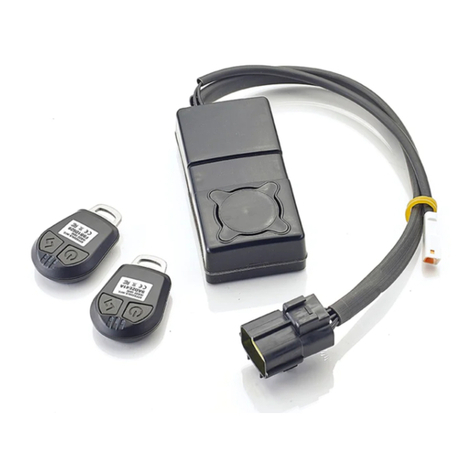
Triumph
Triumph Protect+ user guide
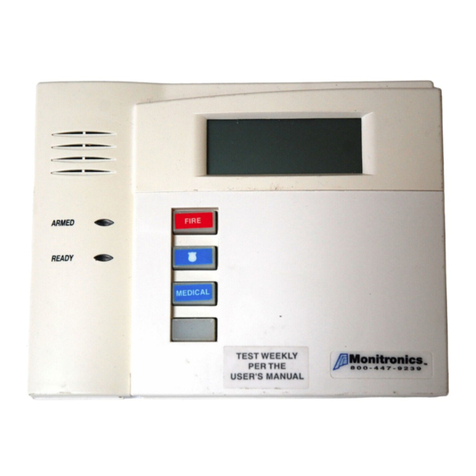
Monitronics
Monitronics VISTA-20PMT user guide
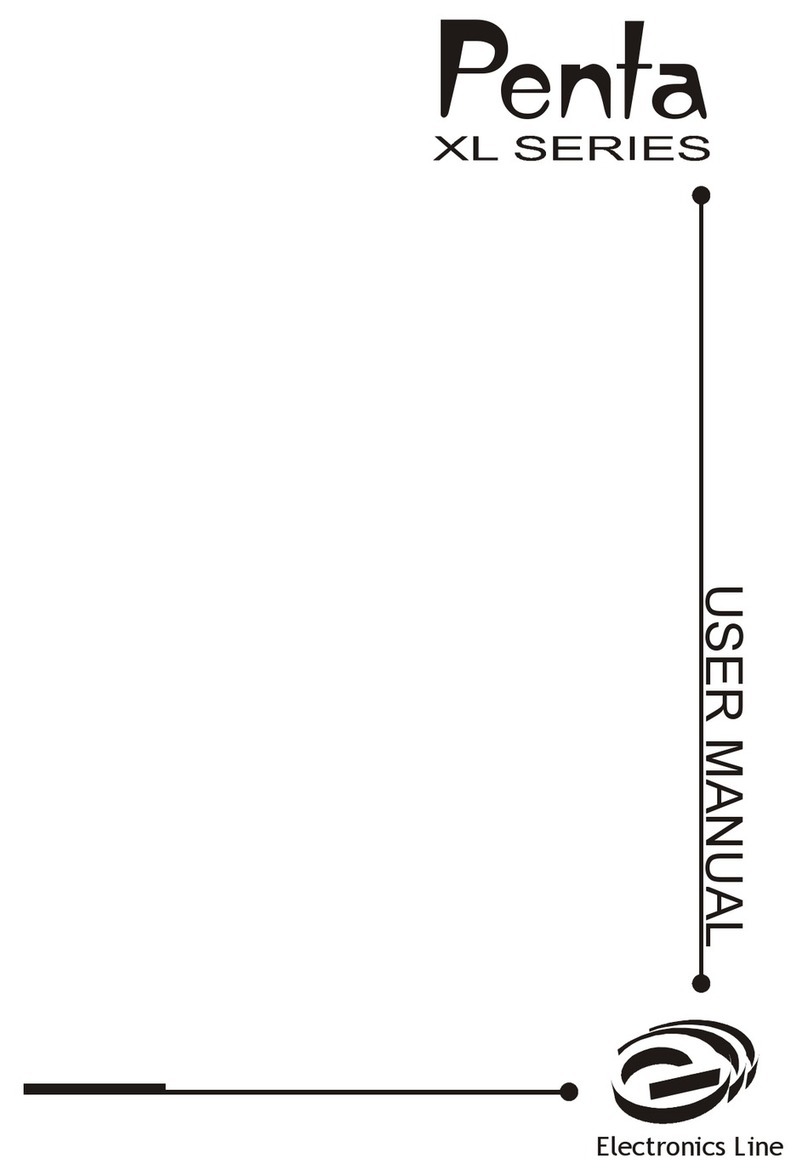
Electronics Line
Electronics Line Penta XL series user manual

ABB
ABB L240 Series Installation, commissioning & operation
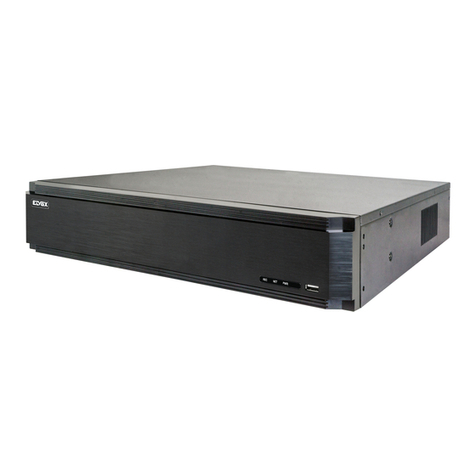
Vimar
Vimar ELVOX TVCC manual
